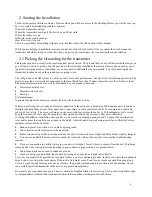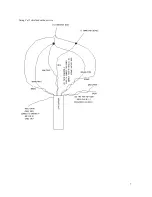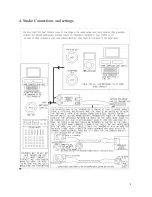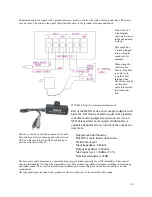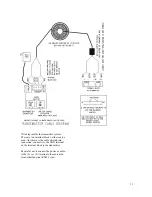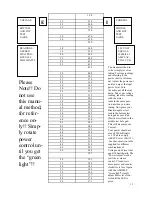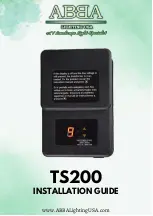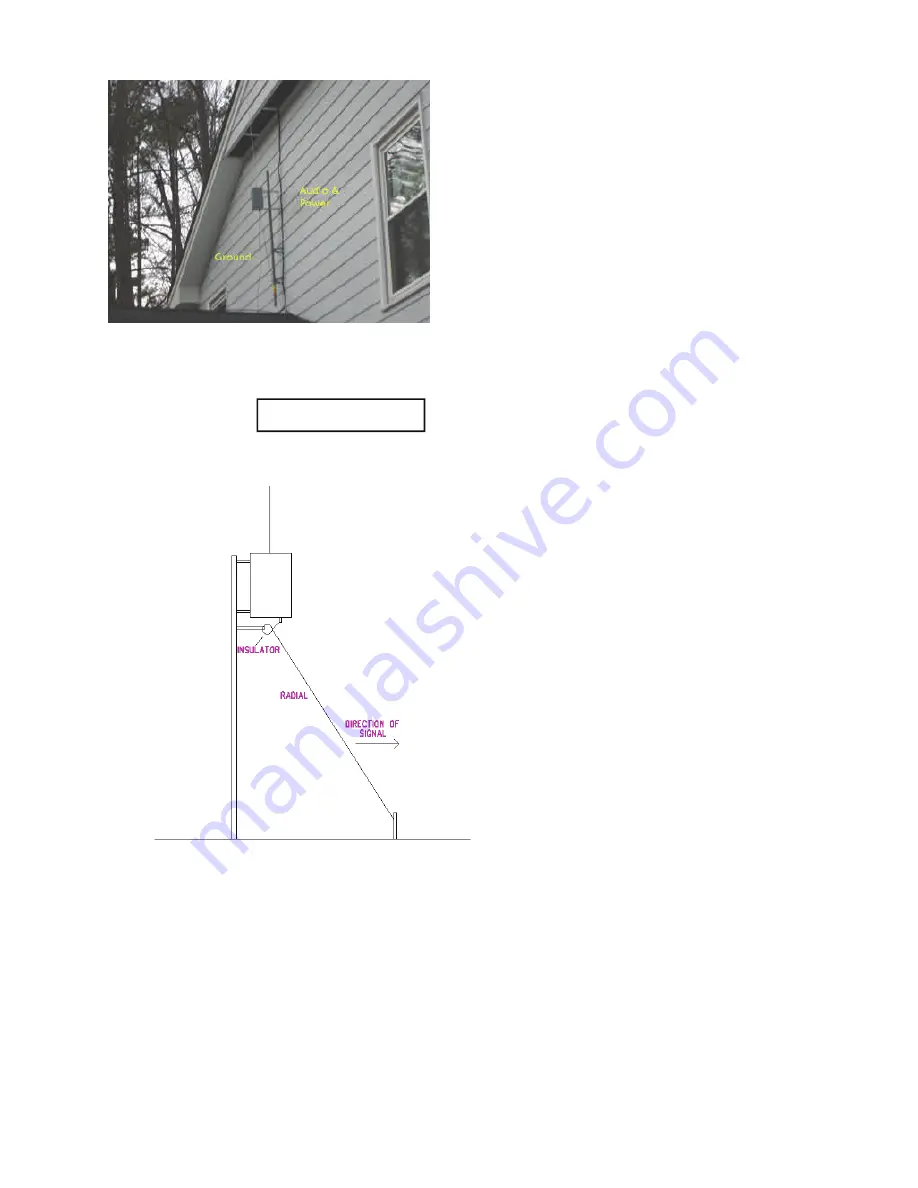
NO!!!NO!!!
Do you see how the transmitter is mounted right next to the
house? It is not above all buildings, the antenna is not in the
open air, also look at the antenna, it is right up against the
siding!! NO!!
Even if this does work a little, range will be very low in the
direction of the house.
This transmitter needs to be moved up so that the antenna is
entirely above the top roof line, preferably at or near the peak
of the roof.
Remember if you cannot get one location to work well you
may need to try another. We will talk in the troubleshooting
manual about how to determine if you have a good ground or
not.
Be careful of power lines, stay away from them for safety
reasons. Be sure to follow safety laws and procedures when
climbing, do not mount the transmitter in a unsafe location.
2.3 Using Ground Radials
We have referred to buried radials earlier. In general
for a radial to be effective the length should be
more then the height of the antenna tip is from the
ground. A radial is just a wire going from a center
ground rod outward.
Elevated radials
First of all be aware that elevated radials do increase
radiation, and may not be approved should you be
inspected by the FCC
Note the direction of increased signal. More then
one radial can be used.
Buried radials
There should be no problem with the FCC concern-
ing buried radials, metal in the dirt does not radiate.
For more Information see the Legal section.
This is the wire that connects between the studio and transmitter. The kind of wire used is important. We recom-
mend 2 pair, #22, shielded, UV protected, outdoor wire. Several hundred feet can be used with a voltage drop of 1-
2 volts at the most.
Belden 8723 is the 2 pair #22 wire we recommend. Cat 5 outdoor shielded wire can also be used, though it is
smaller, #24. Cat 5 has 4 pairs so it is possible to connect three of the pairs together for power to help allow for the
smaller size.
Connect the Shield drain (ground connection) at one end of the cable only, usually the transmitter end. There is a
terminal marked GND that can be used to ground the shield drain.
Good grounding is important for safety lightning protection , be sure to follow any national and/or local electrical
grounding codes.
3. Installing the Control Wire
6
CAUTION !
Summary of Contents for HAMILTON AM1000
Page 7: ...Using Cat 5 shielded outdoor wire 7 ...
Page 8: ...4 Studio Connections and settings 8 ...
Page 14: ...6 Trying to get good Range 14 ...
Page 19: ...19 11 Certification ...




